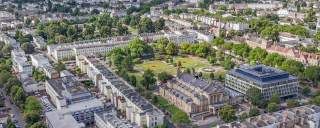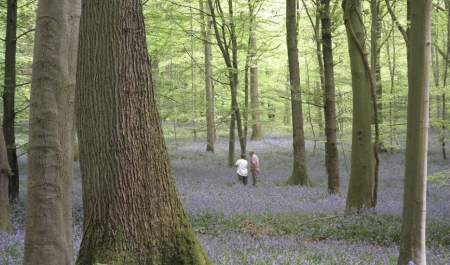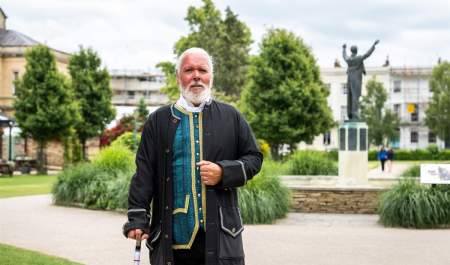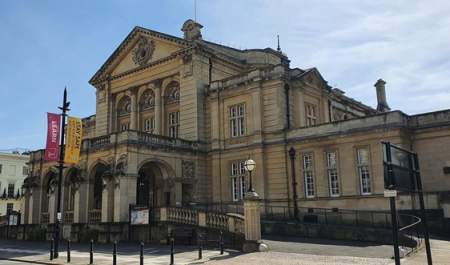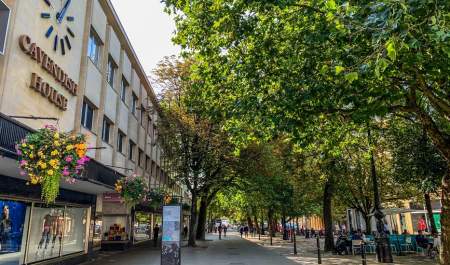Historical Cheltenham free self-guided tour
Why not stretch your legs whilst you learn about Cheltenham’s fascinating historic buildings and Regency history as a spa town.
We also have a free kids trail. Encourage your children to learn about Cheltenham’s most well-known buildings and test their observation skills with our fun self-guided tour which can be enjoyed at any time.
You can start the Cheltenham historic self-guided walking tour at any of the stopping points below but we recommend that a good starting point is the shopping district of Montpellier.
Download a printable version of the self-guided heritage tour.
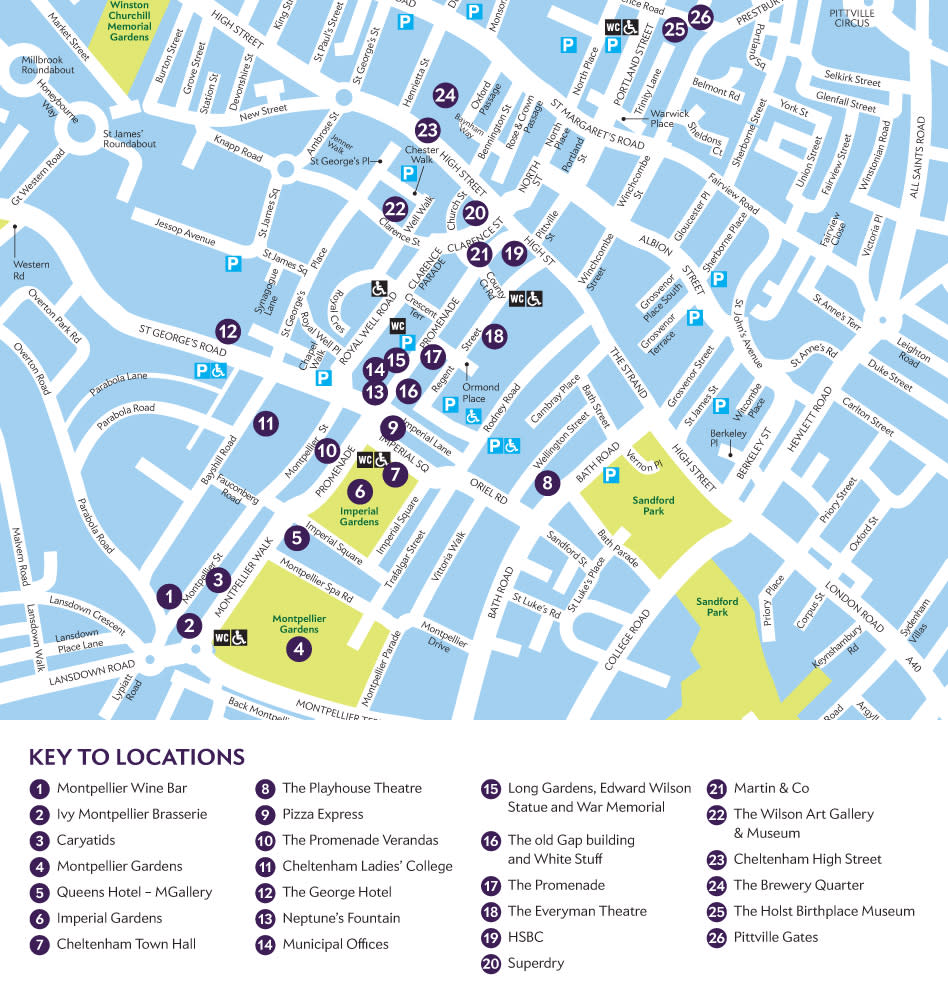
-
Montpellier Walk, Cheltenham GL50 1SH
There are an extensive number of historic and iconic buildings in Montpellier; from Cheltenham’s first pump room ‘Montpellier Spa’ which is now home to the Ivy Montpellier Brasserie, to the curved facade of Montpellier Wine Bar. Spot the stone sculptures known as Caryatids (modelled on the Acropolis in Athens), which add to the continental feel of the area.
The development of Montpellier Spa and estate was carried out at the beginning of the 19th century by Henry Thomson on a site originally known as Trafalgar Field. In 1809, Thompson built the first pump room, a rather primitive structure which was pulled down in 1817 and replaced by the existing building designed by George Allen Underwood. Eight years later the architect, John Papworth, added the domed circular room which became known as the Rotunda. The interior was used as a ballroom, graced by the presence of the Duke of Wellington and many of his distinguished contemporaries.
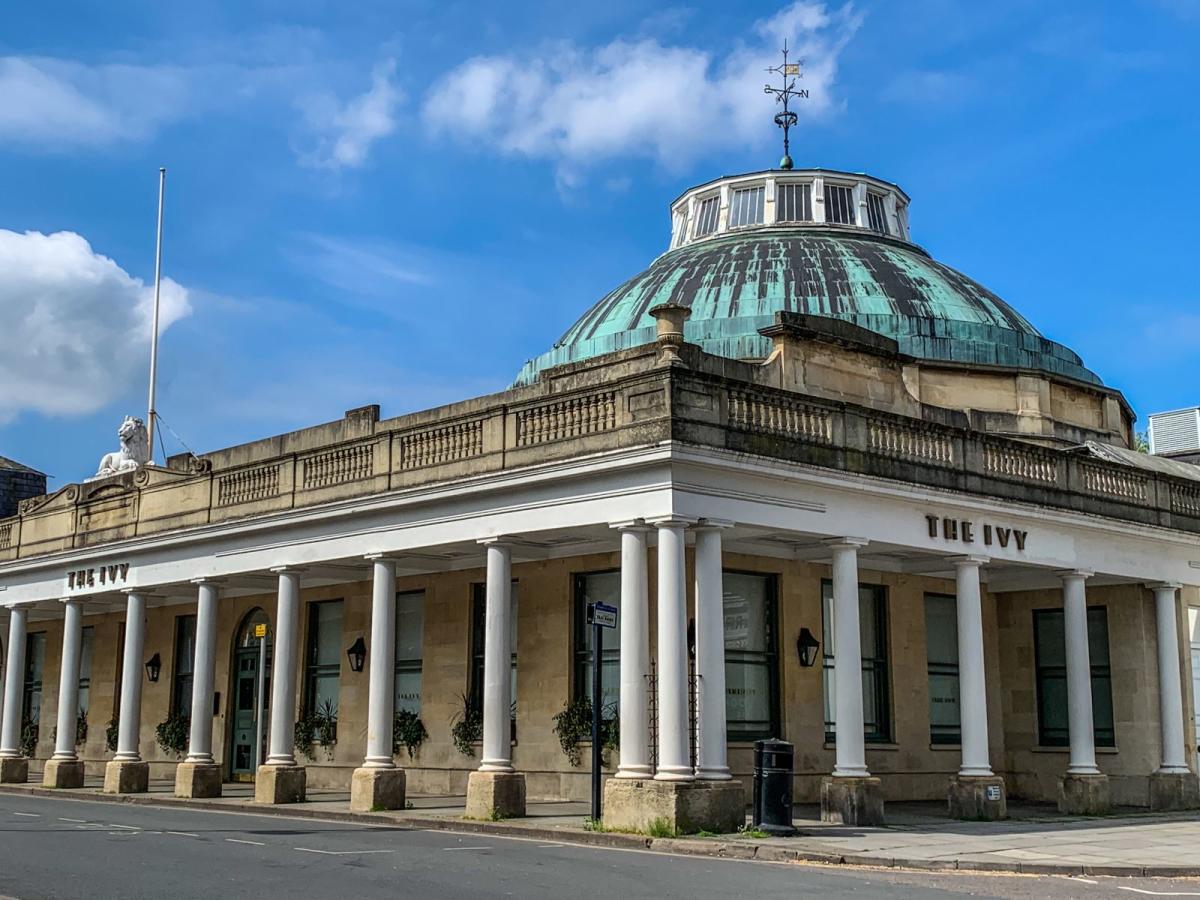
-
24 Montpellier Spa Rd, Cheltenham GL50 1UL
The gardens were originally developed as pleasure gardens to provide an appropriate setting for the pump room and for society to meet and promenade. Although open to the public on payment of an admission fee, the gardens were mainly frequented by those ‘taking the waters.’ By the 1830s, the gardens were home to a glass house filled with exotic plants, a Chinese pagoda with integral bandstand and an ornamental fountain.
The change towards public ownership in the late 19th century saw pleasure gardens become places of public amusement, recreation, and resort. In 1864, the bandstand was constructed, quickly becoming a popular facility which held regular concerts. The proscenium building, built at the turn of the 20th century, provided a venue for theatrical and other cultural events. Sports facilities, including lawn tennis, archery and croquet, were also introduced. Six all weather tennis courts remain today, although the Cheltenham Croquet Club moved to its own grounds in 1920.
In 1893, Cheltenham Borough Council purchased Montpellier Spa and its gardens for £7,400. The history of the gardens during the 20th century was dominated by World Wars 1 and 2 when they were used for the war effort for training, exercise and cultivation as part of the 'Dig for Victory' campaign.
By 1955, the gardens were laid out in their present form and few changes occurred until the early 21st century. The rotunda was restored by the council and Lloyds Bank in the early 1960s then by The Ivy in 2017. In 1994 the Civic Society initiated restoration of the Bandstand.
Extensive restoration and development of the gardens was made possible in 2006 by the award of a substantial grant from the Heritage Lottery Fund's Public Parks Initiative programme and a significant contribution from the borough council. The restoration has ensured that Montpellier Gardens will continue to play an important part in the lives of residents and visitors alike well into the 21st century.
The gardens are part of the Cheltenham Central Conservation Area which, at over 600 hectares, is one of the largest in the country. Source – Cheltenham Borough Council.
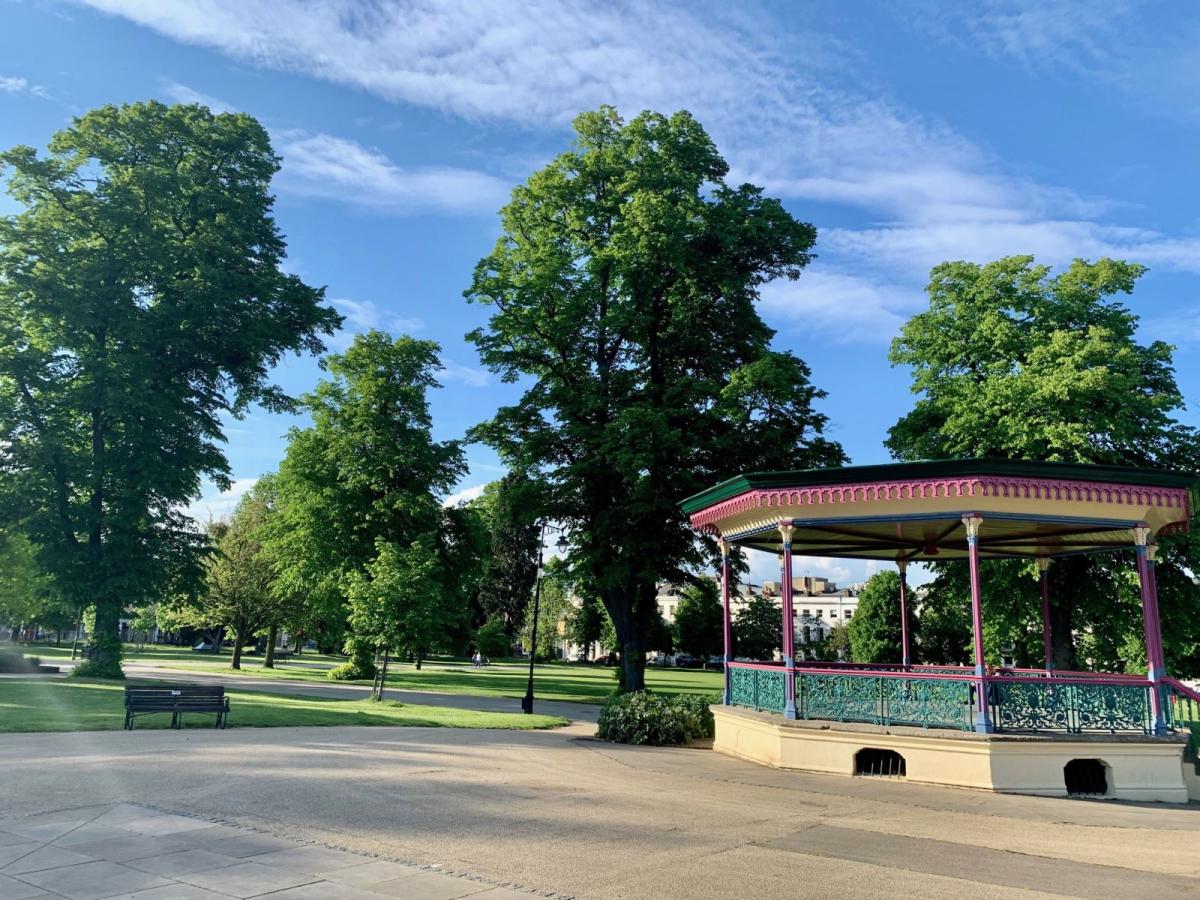
-
The Promenade, Cheltenham, Gloucestershire, GL50 1NN
Built in 1837 as a tribute to Queen Victoria’s ascension to the throne, this stately Regency building dominates the southern end of the Promenade. An increase in the number of wealthy visitors to Cheltenham’s famous spas meant that the old inns and small hotels of the town could no longer cope. This hotel was opened in the first year of Queen Victoria’s reign and named in her honour.
Designed by Cheltenham architects RW and C Jearrad. Many important visitors to Cheltenham have stayed here, including Charles Dickens. It was originally going to be called the Royal Victoria Hotel. The beautiful wallpaper surrounding the staircase inside the hotel is the original. Designed by AW Pugin, it is the same as in the Houses of Parliament.
In 2020 the Queens was awarded the TripAdvisor’s Travellers’ Choice Awards, placing it in the top 10% of hotels worldwide! This special accolade was awarded for the hotel's exceptional and consistent customer reviews and ratings.
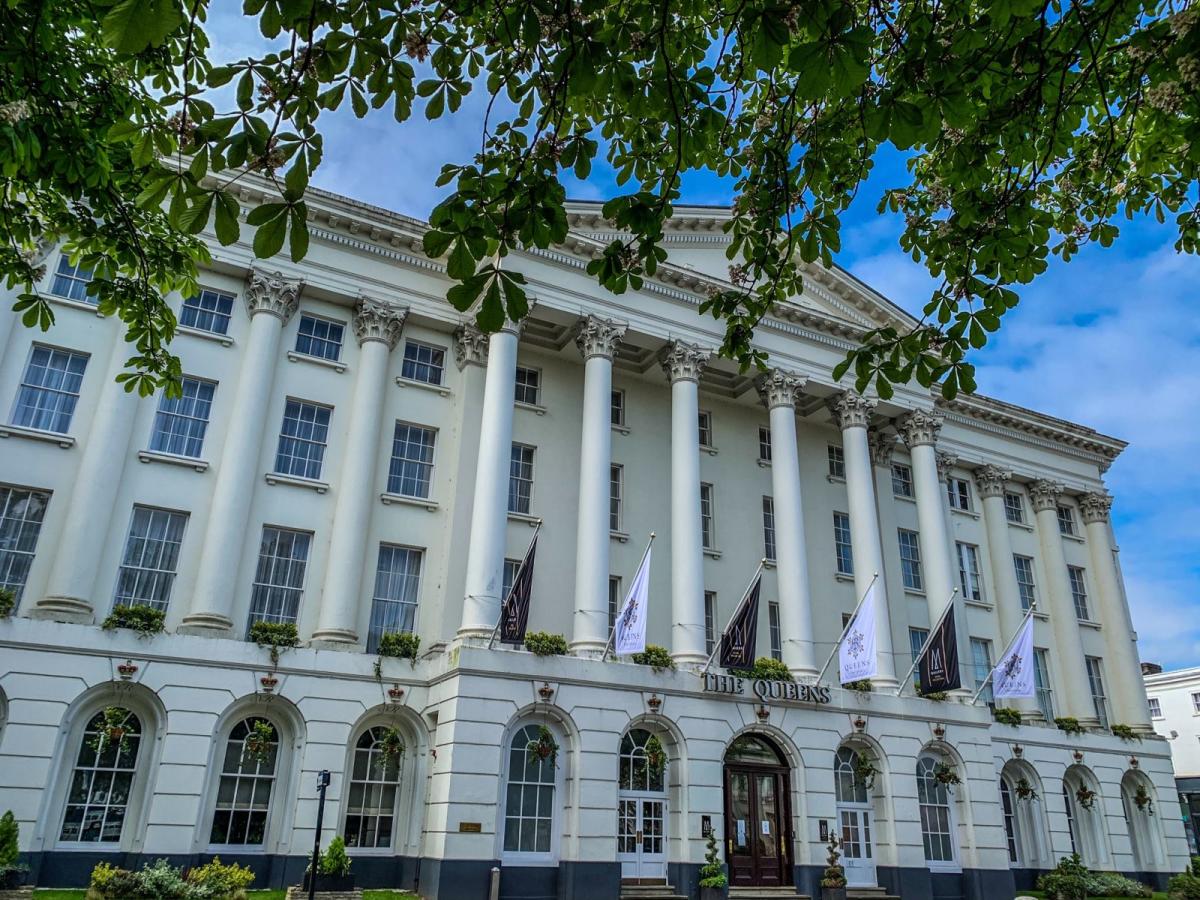
-
Imperial Square, Cheltenham GL50 1QZ
The Imperial Gardens are located at the rear of Cheltenham Town Hall. The formal style you now see was laid out just after the Second World War. Each year, approximately 25,000 bedding plants are used to produce the magnificent floral displays enjoyed by thousands of locals and visitors every year.
This beautiful garden was originally landscaped and planted as a pleasure garden for the wealthy users of the Sherborne Spa (later Imperial Spa) which was built and opened in 1818 on the site which is now the Queen's Hotel. The gardens still retain some of the original Regency features including the central fountain.
The gardens are flanked by extensive Regency facades, with the Regency terrace townhouses encompassing three sides. Many have now become offices, although some remain intact as houses and apartments. Look out for the Regency ironwork and imposing front steps. Of course, The Queen's Hotel is not from the Regency Period, rebuilt in 1837 at a then whopping cost of £47,000, but is very fitting of the era and location. During the summer months, Imperial Gardens becomes host to many outdoor events and festivals including the Jazz and Science.
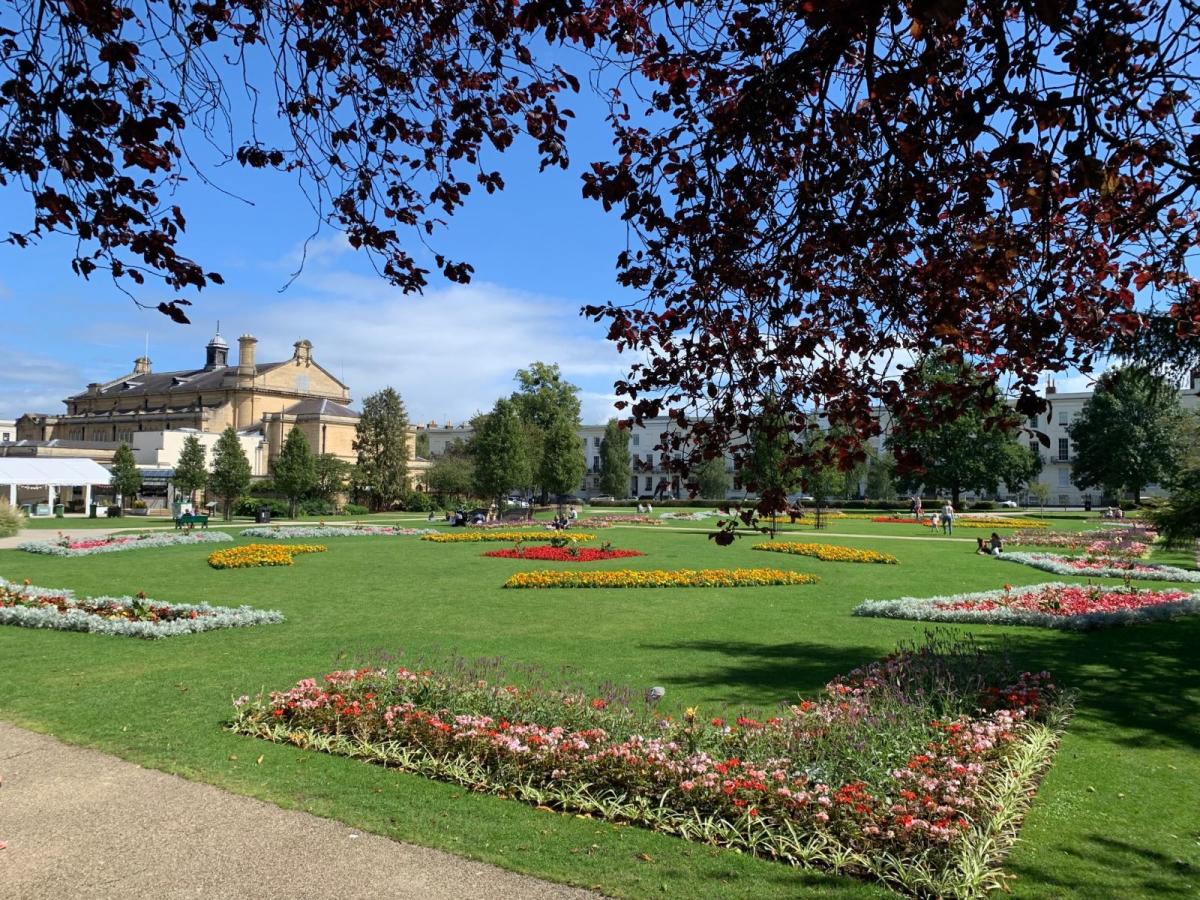
-
Imperial Square, Cheltenham, Gloucestershire, GL50 1QA
Built in 1902-1903 as a venue for social events, it replaced the Assembly Rooms on the High Street, which had been demolished to make way for a bank. Interestingly, unlike most Town Hall's, this grand building in Cheltenham was not built as the seat for a Borough Council, which is instead found in the Municipal Offices across the road on the Promenade.
The site of the Town Hall was originally part of Imperial Square and Gardens, the former pleasure gardens of the then Sherborne Spa. The imposing facade faces Regency terrace townhouses to the front, and the Imperial Gardens at the rear, giving it a green and leafy location.
The building was designed by Gloucester architect, Frederick William Waller, in the fashionable Baroque style during the reign of Edward VII. The cost of the building is believed to be £45,000 and it was opened on the 5th December 1903 by former Chancellor of the Exchequer Sir Michael Hicks Beach MP who has many connections with Cheltenham.
In 1906, in an attempt to revive Cheltenham’s fortunes as a spa town, a new Central Spa serving four different kinds of medicinal waters was installed at the Town Hall.
The building itself featured a coved ceiling over the main ballroom hall, measuring 92 x 52ft. This central room, around which the rest of the building radiates, can seat 1,000 people. The smaller chambers, running parallel to the main room, have a multitude of uses, and have their own architectural features. Just to the left of the entrance hall, there is a small chamber which features an octagonal counter with mounted Doulton ware urns, all of which are still in use to dispense the Cheltenham Spa Waters.
In 1916, statues of Edward VII and George V in coronation robes were both cast in plaster, and placed in the alcoves at either side of the main stage. The stage also featured an organ gifted in 1928. All three of these ornaments were donated by wealthy Cheltenham families.

-
47-53 Bath Road, Cheltenham, GL53 7HG
Take a short detour to view the Playhouse Theatre. The Playhouse, which is a Grade II listed building, is owned by Cheltenham Borough Council and leased to a registered charity led by a board of trustees and supported by over 100 volunteers. It began life circa 1806 as Henry Thompson's manufactory for The Real Cheltenham Salts and over the years was enlarged to incorporate slipper baths, a swimming pool, a steam mill and bakery and medicinal spa, whilst also being used for dances, an indoor cricket school, cycling lessons and gymnasium. After operating as an Air Raid Precautions Centre (ARP) during WWII it was converted to a theatre in April 1945.
In recent years the Playhouse has become a venue for a wide variety of local and touring performers, not just theatre but live music, comedy, dance, poetry, burlesque, improv and film. In 2019 it was given the green light to undergo a multi-million pound redevelopment, to transform it into a cutting-edge hub for performing arts communities. Source – Cheltenham Playhouse.
-
7 Imperial Square, Cheltenham, Gloucestershire, GL50 1QB
Turn back upon yourself towards The Promenade. Belgrave House was built in 1820 and in 1845 it was Haydon and Shaw's boarding house for fashionable visitors to the spa. In 1850, Rowe wrote his Cheltenham guide and noted it as ‘Mesdames Haydon and Shaw’s Boarding House which occupies a conspicuous position at the corner of Imperial Square.’ It was altered to shops in 1876-99. The building is Grade 2 listed. It became Pizza Express in 1993 but was another popular Italian taverna called Eventos before this.
-
Promenade, Cheltenham, Gloucestershire, GL50 9SA
The buildings built as Promenade Terrace in 1834, they were probably a Henney/Harward development, with different builders for each house. They had gardens originally and they all retain their wrought iron verandas and railings. The roofed verandas contain a star and lozenge pattern and uprights with double headed anthemion motif. Many still contain original features inside including dogleg stairs and wreathed handrails. They now house a number of businesses.
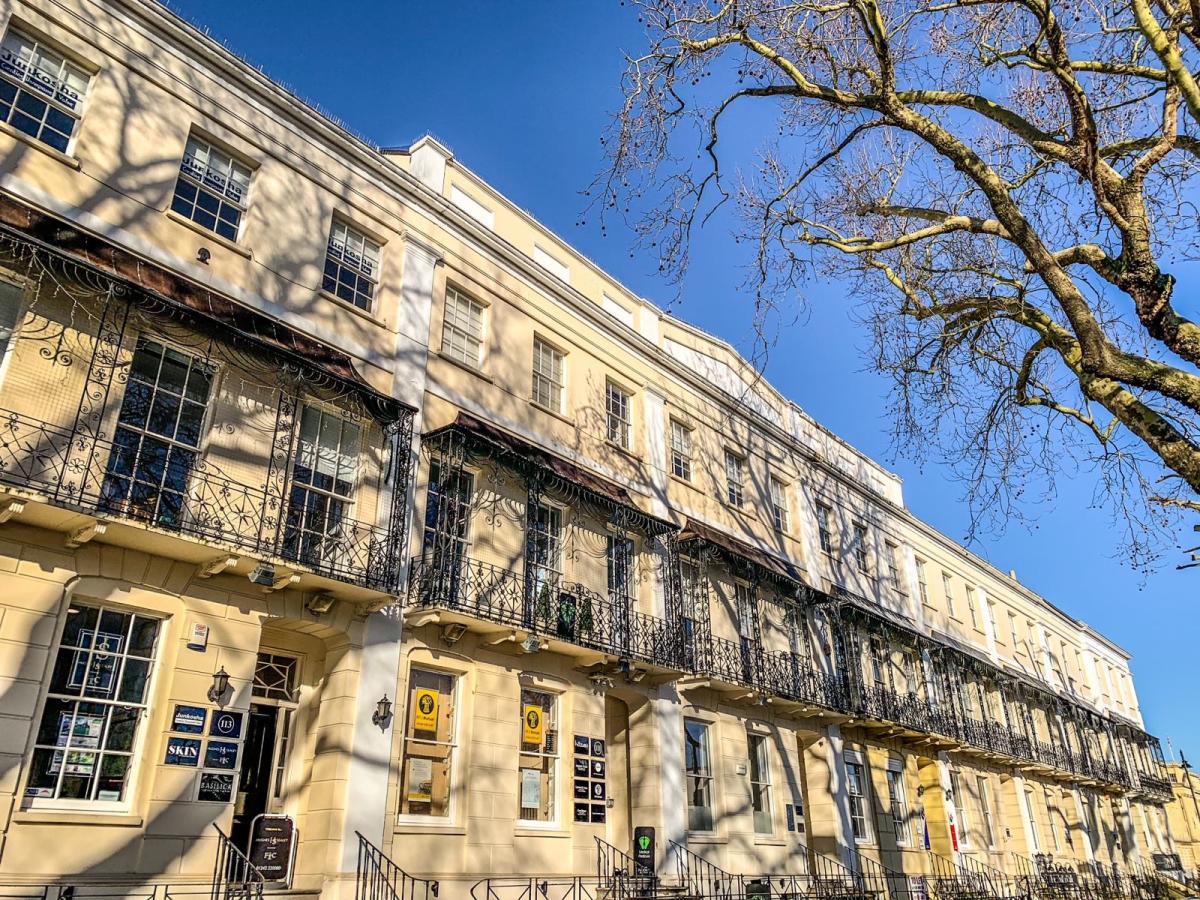
-
Bayshill Rd, Cheltenham GL50 3EP
Founded in 1853, Cheltenham Ladies’ College was established to provide “a sound academic education for girls.” Initially, there were just 82 pupils, almost all of whom were day girls. In 1858, Dorothea Beale was appointed as Principal. Only 27 years old at the time, Miss Beale devoted nearly 50 years of her life to the College and it was under her leadership that the College began to prosper. In 1873, the College moved to its present location, the site of the original Cheltenham Spa. Initially the site consisted of only a boarding house (previously boarders had resided with private landladies), the Lower Hall and a few classrooms, but as years went by the growth of the school and the need for specialised facilities prompted further expansion, including classrooms, music rooms, a library and laboratories.
Miss Beale introduced subjects such as maths and science, despite parental opposition that these were not suitable or necessary for girls, and promoted the fact that her pupils could gain qualifications. Today, Eve Jardine-Young, the Principal, continues to lead with a pioneering approach to girls’ education as it has been led for the past 160 years. Source – Cheltenham Ladies College.

-
St George's Road, Cheltenham GL50 3DZ
Formerly known as 7-11 Bays Hill Terrace. From 1841 - 43 Cheltenham College rented three of the buildings, prior to moving to their purpose-built premises at their present Bath Road site. The terrace then continued as lodging houses. In the early 1800’s Miss Emily Eales used the premises as a boarding-house for 12 Cheltenham Ladies College pupils. (Prior to opening a CLC boarding house at Lansdown Villas).
By 1900 the terrace and its lodgers had become ‘slightly less grand’ and the buildings were deteriorating. In 1908 George Dimmer, the then Mayor, bought some of the terraces. In 1920 the centre of the terrace was opened as the Bayshill Private Hotel by a Mrs Pinkerton, the other terraces became boarding houses or apartments. After the war, under new management, the Bayshill Hotel was still advertising in 1949 - ‘en pension or partial board’ (meaning a boarding house offering full & part board). In 1958 The George Hotel was opened at 41-49 St George’s Road and in the 1960’s it expanded to full No’s 41-55, which premises it still occupies. Source - Jill Waller from the Cheltenham Local History Society.
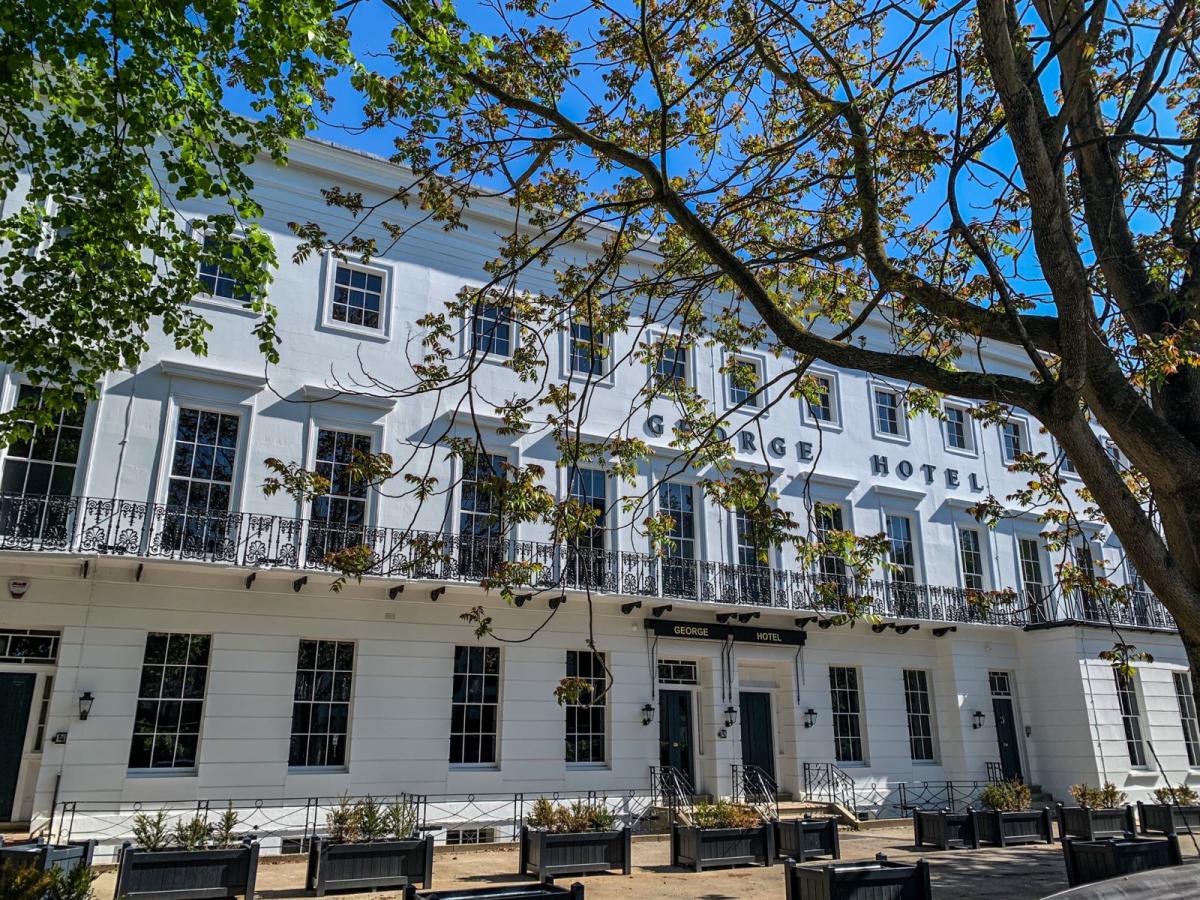
-
Promenade, Cheltenham, Gloucestershire, GL50 9SA
Worth a visit all year round; whether water flows from its faucets or not, the fountain is a monumental statuesque piece depicting Greek god Neptune in a shell-chariot, being drawn by four sea-horses and heralded by conch-shell blowing merman. Neptune sits proudly, clothed in a mantle while clasping a Trident as a symbolic representation of his dominion over the seas, while the horses are depicted in motion. The entire fountain is enclosed by sculpted balusters and vases filled with flowers.
Purported to have been modelled as an ode to the Trevi Fountain in Rome, Italy (although that has never been historically verified) The Neptune Fountain sits outside the Municipal Buildings on The Promenade. Other sources place its inspiration as Bartolomeo Ammannati and his fountain in Piazza della Signoria in Florence, Italy, although again, this has been disputed!
Unveiled in 1893, it was designed by engineer Joseph Hall and carved from Portland Stone by sculptor Richard Lockwood Boulton and his sons. It is fed from the River Chelt, which flows beneath the Fountain in a culvert which diverts the River through the Town to emerge in Sandford Park. At night, it is beautifully lit, creating an eye-catching focal point on The Promenade.
According to archives of the Birmingham Daily Post, upon its unveiling in 1893 by the then Mayoress Mrs J. C. Griffith, the commissioning of the fountain was all part of rejuvenating and beautifying The Promenade. The Newspaper stated “The Mayors in inviting the Mayoress to open the fountain, explained that this work is only part of a scheme for beautifying the Promenade, and that the long garden in front of Promenade Terrace was about to be converted into an Italian garden, with ornamental railings and with a pretty band-stand in the centre. The Mayoress then declared the fountain opened, and turn on the water. Hearty cheers were given as the stream shot into the air, and the Town Band played the National Anthem. A large crowd witnessed the ceremony.”
The Fountain is cleaned, maintained and cared for by Cheltenham Borough Council, and underwent a full restoration in 1989. Source: Birmingham Daily Post - Tuesday 31 October 1893 (British Newspaper Archive).
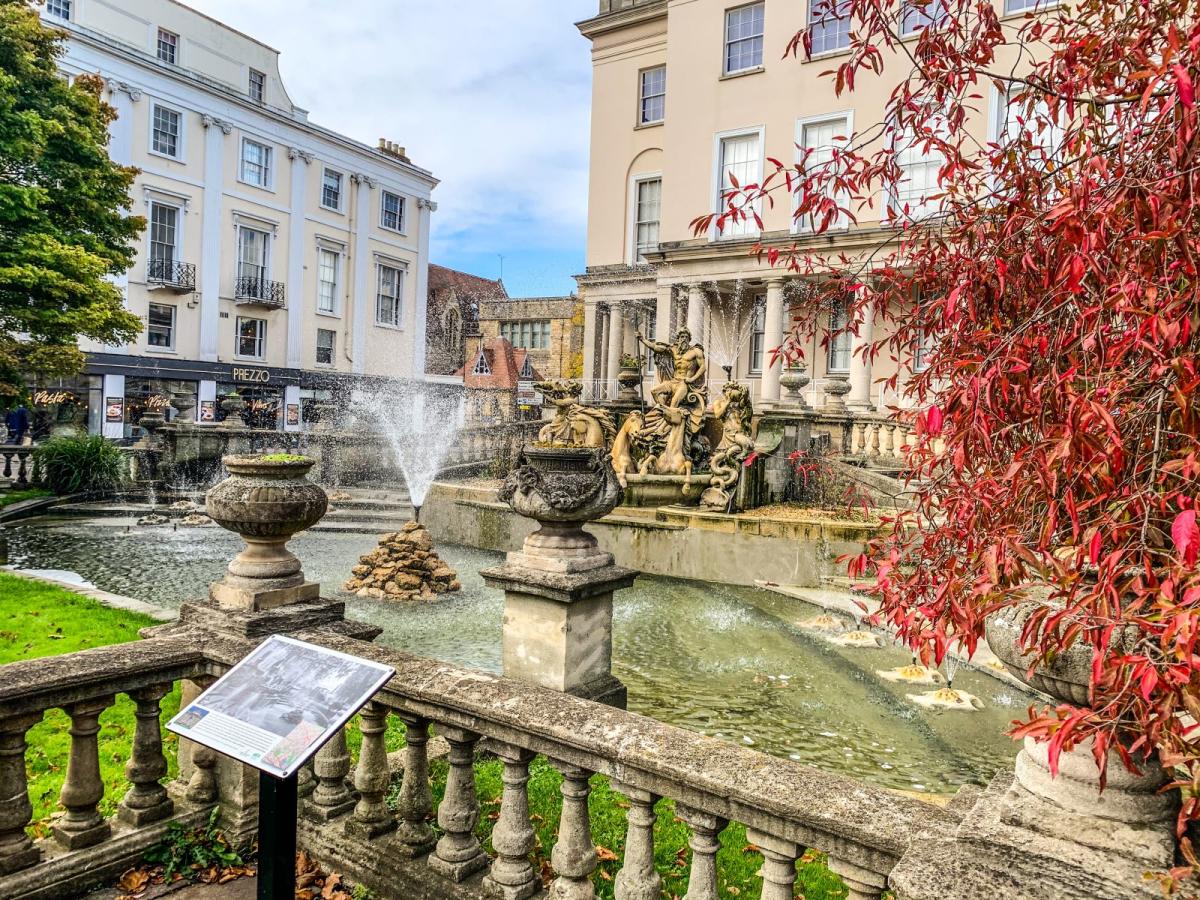
-
Promenade, Cheltenham, Gloucestershire, GL50 9SA
The town’s finest early 19th Century terrace. Designed by George Underwood in the Classical style, the terrace was built as private houses in 1823-35. Originally known as Harward’s Buildings after Samuel Harward, one of the developers of Sherbourne Spa and Promenade. In 1915 its five central houses became the Municipal Offices which by 1958 had expanded to occupy 13 of the terrace’s 19 houses. By the mid-19th century most of the buildings were used by professional or business establishments.
Today, the Grade II listed building is headquarters of Cheltenham Borough Council. Works of art in the Municipal Offices include a portrait by Sir Oswald Birley of General Lord Ismay, who was Chief of Staff to Winston Churchill during the Second World War and who lived in Wormington near Stanton, Gloucestershire.
-
In front of the Municipal Offices terrace is the Long Garden, once private to residents but now the site of several of the town’s statues and memorials including a commemorative statue of explorer Edward Wilson, built in 1906. Edward was born in Cheltenham in 1872, son of a local physician, he died on Captain Scott's ill-fated Antarctic expedition of 1910-12.
A principal aim of the expedition was to reach the South Pole, which no one had ever done before. Wilson was one of five men chosen to make the journey. They set out from the Antarctic coast in November 1911, and arrived at the Pole on 17 January 1912, only to discover that the Norwegian explorer, Roald Amundsen, had reached it a month before.
Their journey back was dogged by terrible weather, food and fuel shortages, and sickness. By mid-March, two of the party had died, and the remaining three, including Wilson, were marooned in their tent by a nine-day blizzard. There they died, during the last days of March 1912, their bodies being discovered eight months later, on 12 November 1912. Source – Wilson Art Gallery & Museum.
Directly in front of the main door of the Municipal Offices is the imposing cenotaph of Cheltenham's War Memorial. The inscription reads – “Remember the men of Cheltenham who gave their lives for you in the Great War 1914 – 1919. If they were strangers to one another here in their common home, they served and wrought and died in many lands near and far as a Band of Brothers. Learn from them so to live and die that, when you have followed them and are no more seen, you may, like them, be remembered and regretted.”
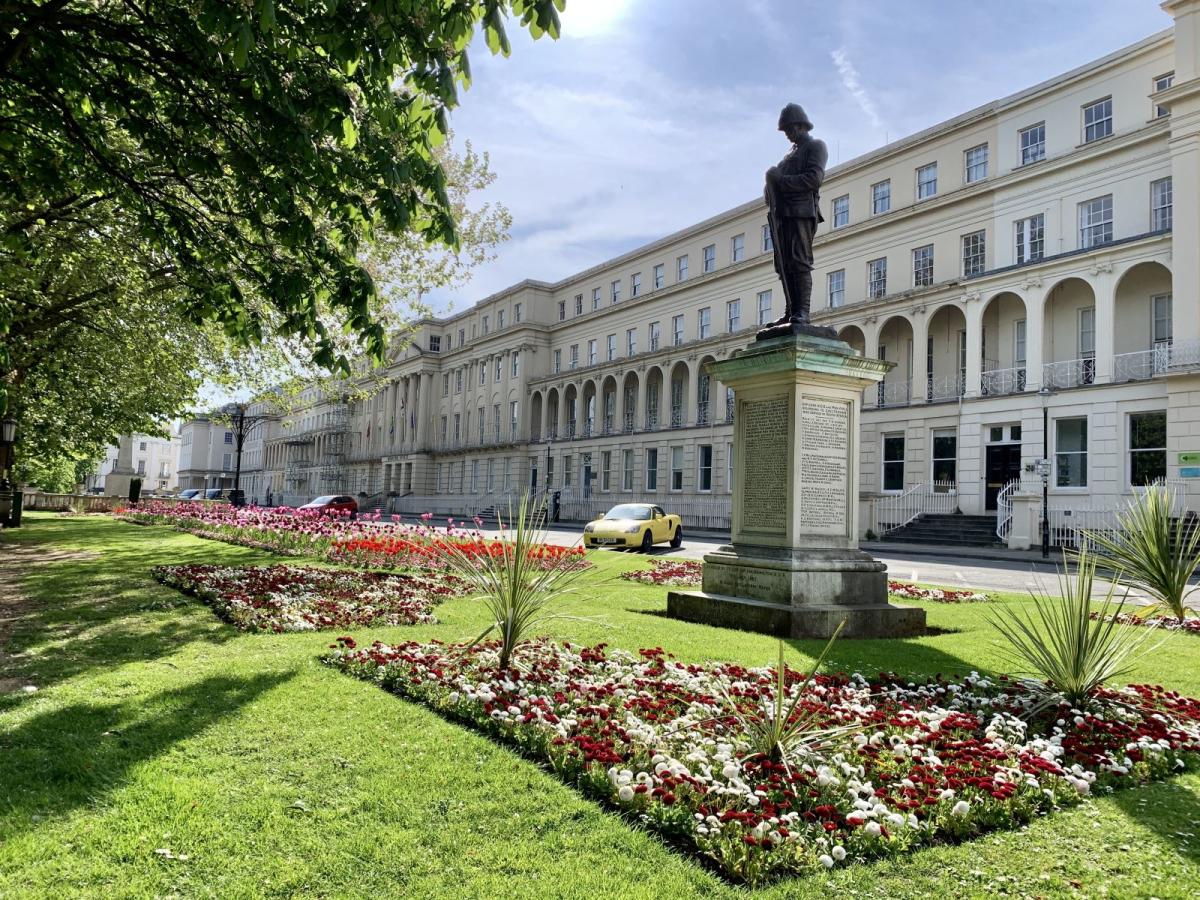
-
102 - 104 Promenade, Cheltenham, Gloucestershire, GL50 1NB
Originally three houses built in 1820-40 with 1930s-50s shop fronts. They have Ionic and Doric columns of classic architecture. The building also fronts what was once Cheltenham’s manufacturing chemist - Beetham & Clark Dispensing Chemists – It was established in 1846. Mr. Beetham’s wholesale trade was started with Capillary Hair Fluid, other hair preparations, and Beetham's Corn Plaster. To these were added, as time went on, Beetham's Glycerine and Cucumber and the Larola skin tonic series. By 1880 the Glycerine and Cucumber was being advertised internationally. Following this, the buildings behind were home to Gloucestershire Dairy & Creamery until 1993.
-
Cheltenham's famous Promenade dates back to 1818 at the height of the Regency period, when the avenue of elms and horse chestnut trees was first planted. In its early days, the Promenade was reserved for subscribers only.
It was initially a marshy, boggy track near some of the natural springs common to the area, until the much heralded Sherborne Spa (later Imperial Spa) was built for wealthy guests, at the site where the Queen's Hotel** now resides. The spa was surrounded by pleasure gardens (most of which are still preserved as the Imperial Gardens), and the Promenade was transformed into a tree-lined avenue as a place to 'Promenade' and be seen.
Initially, the tree-lined avenue was undeveloped, but by 1820, building had started in earnest with what we now know as the Municipal Buildings. The Cheltenham Promenade now has a reputation as one of the best preserved and most beautiful thoroughfares, and is a nostalgic modern hub with smart cafes and shops blending in with a historic facade.
**The Sherborne / Imperial spa itself was modelled on the Temple of Jupiter in Rome, by local architects the Jearrad Brothers. It was dismantled in 1947 when the spa ran out of water, and the Queen's Hotel was built in its place and opened a year later at a cost of £47,000.
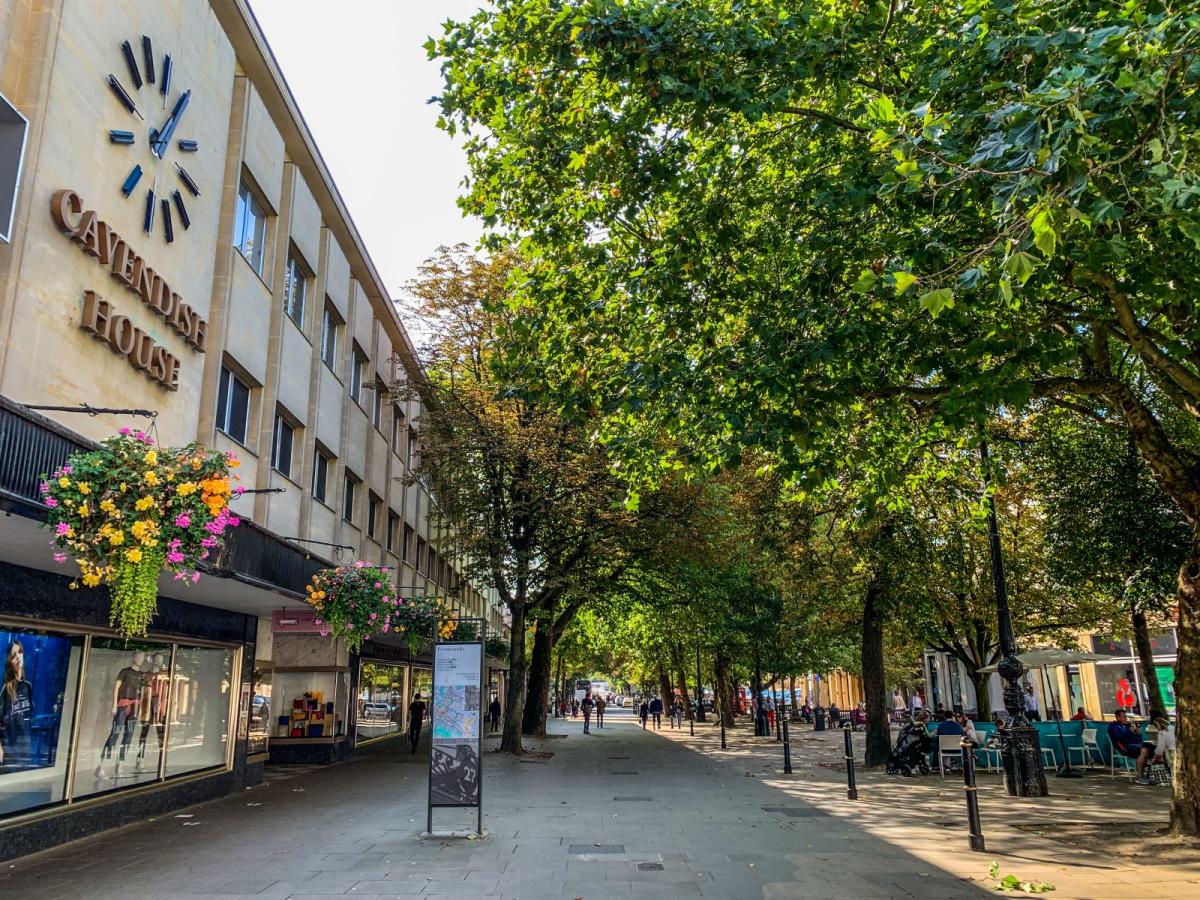
We hope you’ve enjoyed this free self-guided historical tour of our Regency town. Of course it’s not the same as taking a tour with a professional tour guide! We thoroughly recommend you book on a guided tour with Tour and Explore, The Cheltenham Promenaders or Ogbow Tours
Tour guides & further information
Tour and Explore
- 4 Pullman Court
Tour and Explore Our fully trained, qualified Tour Guides have shown many…
The Cheltenham Promenaders
- Montpellier
The Cheltenham Promenaders provide guided walking tour experiences around the…
Ogbow Tours - Guided audio walking tours
Owen Bowles is a Blue Badge Tourist Guide for the Heart of England. He publishes GPS…
Cheltenham Tourist Information Centre
- Cavendish House
Cheltenham Tourist Information Centre located at the Promenade entrance to Cavendish…

